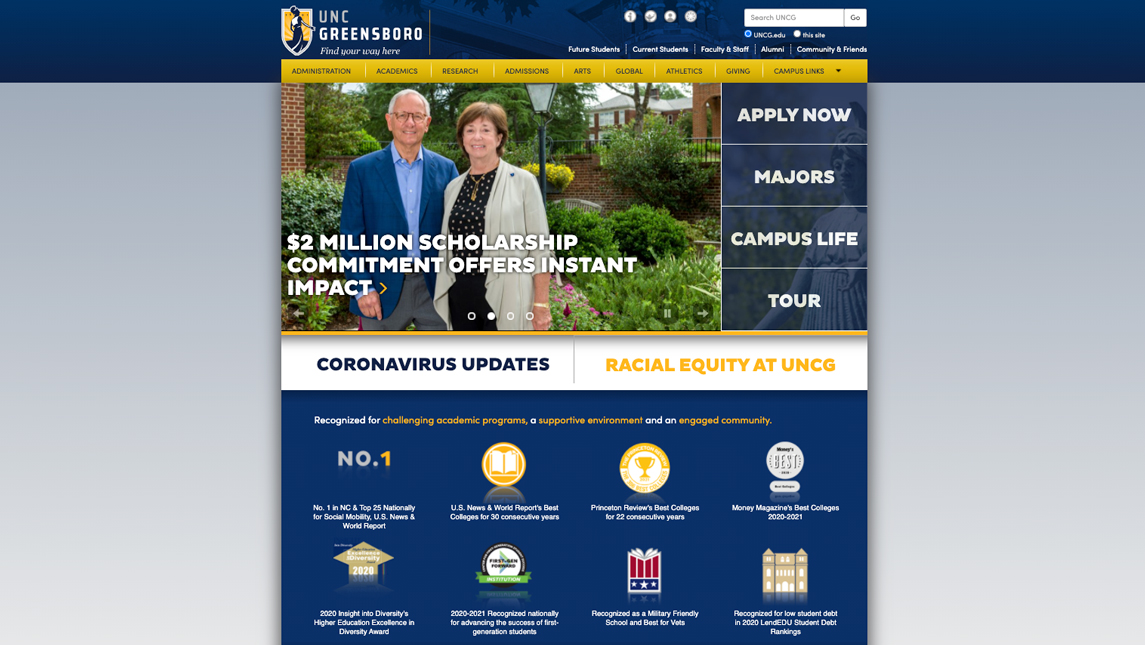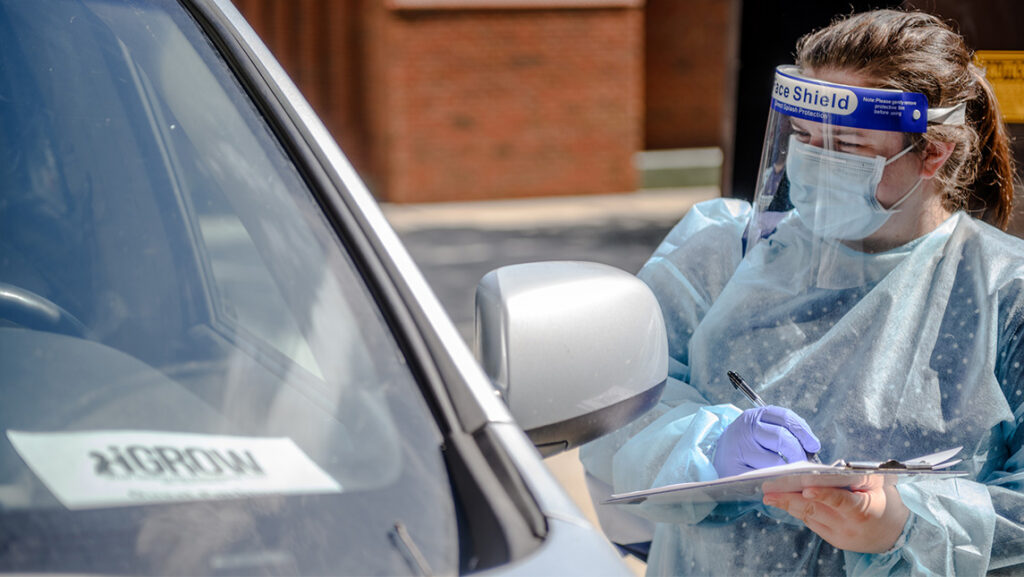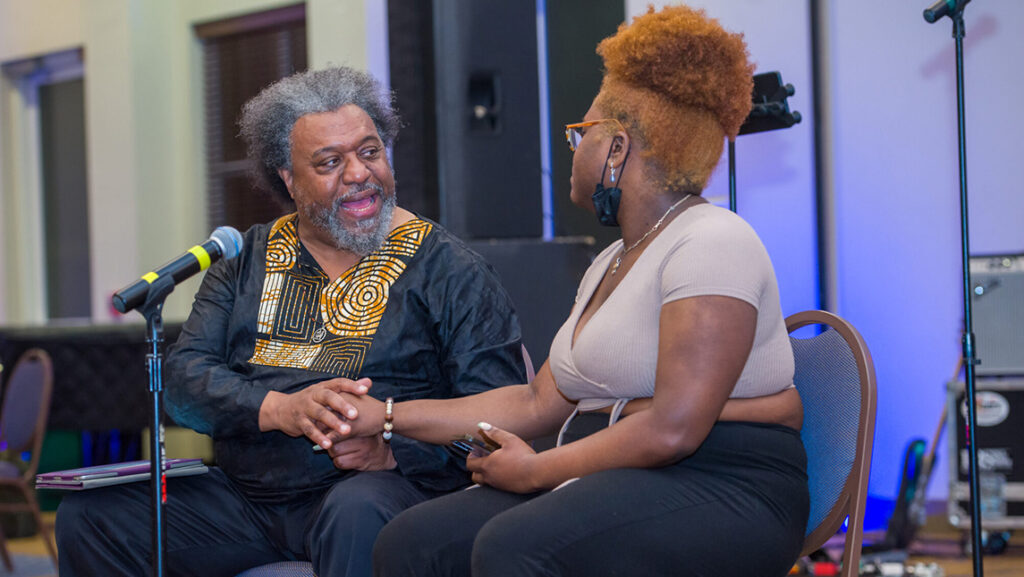
Sometimes a project comes along that is a perfect opportunity for learning, professionalization, and a chance to create a really great product.
That is exactly what happened when graduate students from Dr. Anthony Chow’s Instructional Design course in UNCG’s new online Instructional Technology MEd program landed their first group project: To lead usability testing for the new UNC Greensboro website design that is underway this year. And that project happened in the first week of class.
Under the mentorship of Chow, 5 of the 13 students in the course embarked on website usability testing with faculty, staff, and students. The students documented user interaction with web page architecture and noted how long it took users to perform certain tasks, and noted issues users had with navigation. The users’ commentary was captured via video as they verbalized their thought process while navigating the web pages.
All of this information and data was collected, organized, and summarized – then presented to the Next Generation Website Project team. The goal of these studies is to improve and refine the way websites and webpages are organized in order to provide the best user experience possible.
“Real application with real consequences represents an ideal learning environment,” says Chow. “As a member of a focus group assisting in helping reimagine the new UNCG website, I saw an opportunity to integrate usability testing with the web production and UX course that I was teaching.”
Quinn Dalton, the graduate assistant for the course, was coordinator for the project. In addition to Chow, she worked closely on the study with Chris Waters from Information Technology Services, Kimberly Osborne from University Communications, and VisionPoint Marketing, who is the Raleigh-based contractor for the website redesign effort.
Drawing upon her background as a writer and her previous work in public relations, Dalton is also charged with promoting the new Instructional Technology MEd program via social media channels and websites. Learning to produce usability interview videos has given her a boost in mastering technology she hasn’t used before, and content generated during the usability testing can be used to help raise awareness of and encourage recruitment for the new program.
“The MEd program and the new website usability project brings together everything I’ve been interested in,” Dalton says. “And it’s design, to solve a problem. It’s psychology, understanding your users, it’s marketing, and how you reach them. So it’s all these things that I’ve done and enjoyed. And I really want to be able to do this work and have the credentials for it.”
At the beginning of the fall semester, Chow presented the project to his students as a volunteer opportunity, and Dalton and the other grad students seized the chance. While Dalton’s role was to schedule the user tests and provide support as needed, the other students focused on various user groups: Cameron Raissi conducted testing with current students, Alanna Cates tested prospective students, Melissa Casey tested faculty, and Cam Roberts tested staff.
After Chow created key tasks for each user group, Dalton explains that “the students were responsible for creating the critical website user pathways – in other words, the most efficient path from the homepage to complete each task. After the training, Chow mentored the students to prepare them for the usability testing, the user interviews, and the data compilation work. Afterward, each student contributed 8 to 10 hours to the project – all within the span of a few days.”
The students’ work contributed valuable data to the project at a critical milestone in the design process, which was to focus on information architecture. And they had to work quickly under a tight deadline – approximately four days total.
“This presented a win-win-win-win situation,” Chow says. “Students had a hands-on experience with real consequences, this added to the quality of my course, our new website had the benefit of usability testing, and the web design team were able to watch videos of users trying to accomplish tasks using the redesigned information architecture.”
Involving the MEd students in the design process allowed the students a chance to give valuable feedback as users on the proposed website organization, while also affording them the chance to conduct their own usability interviews with members of the campus community. The real world design process of working on a high-profile project in their very first semester has given them invaluable insight and experience on which to build their professional portfolios, and also allows the web design team to work collaboratively with students on what will become a major design overhaul of a major university website.
Story by Matthew Bryant, University Communications


